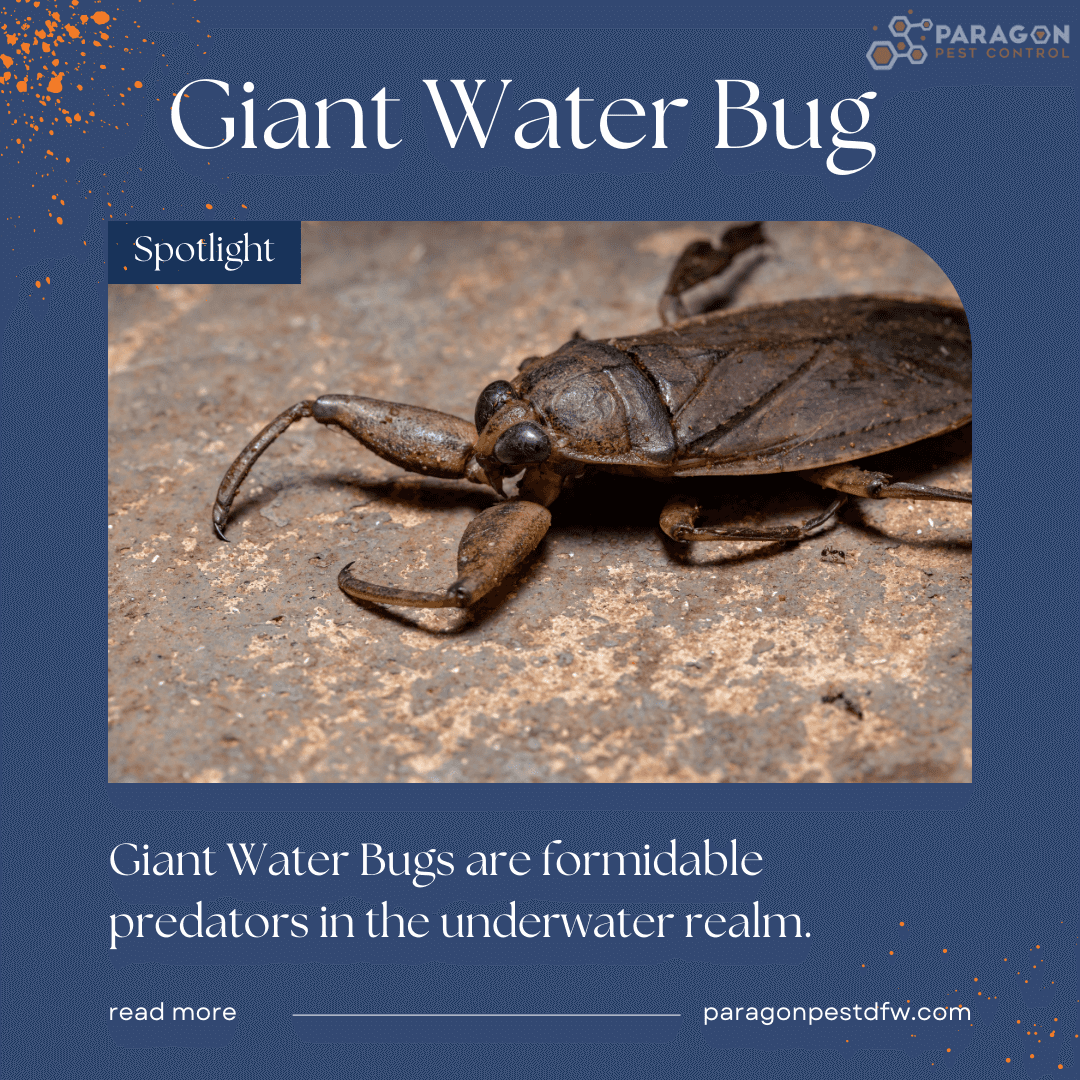Unveiling the Giant Water Bug (Lethocerus americanus): A Fascinating Aquatic Predator
Dive into the intriguing world of the Giant Water Bug (Lethocerus americanus). Discover its unique characteristics, predatory behavior, and role in aquatic ecosystems. Learn more with Paragon Pest Control.
In the intricate tapestry of aquatic ecosystems, one creature stands out with its unique appearance and predatory prowess: the Giant Water Bug (Lethocerus americanus). Found in various freshwater habitats, including Texas, these bugs are captivating not only for their size but also for their intriguing behavior and ecological role.
Anatomy and Appearance
As the name suggests, the Giant Water Bug is a sizable insect, with adults ranging from 1.5 to 4 inches in length. Their bodies are flattened and elongated, designed to glide smoothly through the water. Their coloration can vary from brown to dark olive, providing effective camouflage in aquatic environments.
One of the most distinctive features of the Giant Water Bug is its powerful forelegs, adapted for capturing prey. These legs are equipped with sharp hooks that immobilize and secure their victims, making them efficient predators.
Predatory Behavior
Giant Water Bugs are formidable predators in the underwater realm. They are known for their ambush hunting strategy. These bugs patiently wait for unsuspecting prey, which can include small fish, tadpoles, insects, and even crustaceans. Once prey approaches, the Giant Water Bug strikes swiftly, using its powerful forelegs to grasp and immobilize its victim. A potent enzyme injected during the strike begins the process of digestion, allowing the bug to consume the liquified contents.
Life Cycle and Habitat
Giant Water Bugs undergo incomplete metamorphosis, progressing through several stages: eggs, nymphs, and adults. Eggs are usually attached to aquatic vegetation, ensuring the nymphs have a suitable environment upon hatching.
These bugs inhabit various freshwater habitats, such as ponds, lakes, streams, and even slow-moving rivers. They are particularly prevalent in areas with aquatic vegetation, where they can find both shelter and prey.
Ecological Significance
Giant Water Bugs play a crucial role in maintaining the balance of aquatic ecosystems. As predators, they help control populations of smaller aquatic organisms, preventing overpopulation and promoting biodiversity. Their presence is an indicator of a healthy and well-functioning aquatic environment.
Interaction with Humans
While Giant Water Bugs are essential components of aquatic ecosystems, they can sometimes come into contact with humans. Swimmers or individuals wading in water bodies might encounter these insects, which can deliver a painful bite if provoked. It's essential to avoid handling them and to appreciate their role from a respectful distance.
Conclusion
The Giant Water Bug, with its impressive size and remarkable predatory abilities, is a captivating inhabitant of freshwater habitats. As we explore its life cycle, behavior, and ecological significance, we gain a deeper understanding of the delicate web of life that sustains our ecosystems.


